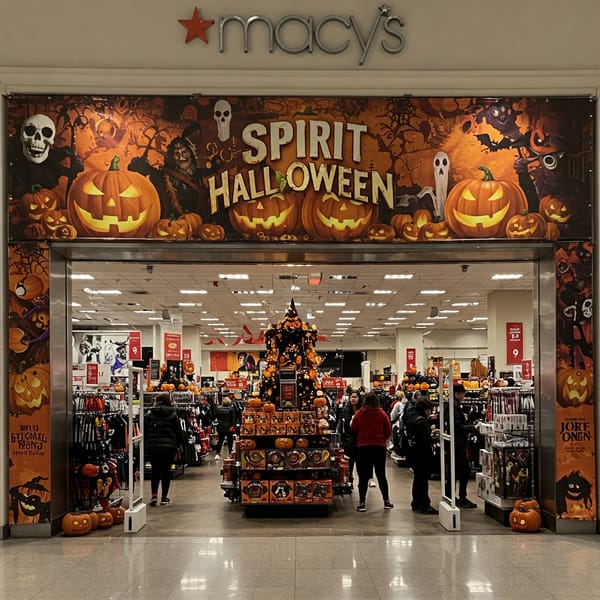Amazon's Growing Influence in Fashion: A New Retail Powerhouse

Amazon continues to expand its influence across various sectors, most notably in the fashion industry, where it now commands over 50% of the online clothing market share. This remarkable growth underscores Amazon's strategic expansion into fashion, leveraging its extensive logistics network and advanced data analytics to capture and sustain consumer interest.
Market Dynamics and Competitive Landscape
While Amazon leads the pack, other major players in the fashion e-commerce landscape are also noteworthy. Companies like Shein and Zalando have carved out significant niches, catering to diverse global audiences with fast fashion and a wide array of choices.
- Shein: Known for its aggressive pricing and rapid design turnaround, Shein has captured a large portion of the youth market, particularly influencing fashion trends among Gen Z consumers.
- Zalando: Europe's leading online platform for fashion and lifestyle, Zalando offers a wide range of products, including clothing, footwear, accessories, and beauty products. It appeals to a broad market with its comprehensive offerings and user-friendly interface.
Strategic Implications for Retail and E-commerce
Amazon’s dominance in fashion e-commerce is not just reshaping consumer expectations but also influencing how other retailers strategize their online and offline presence. Here are a few strategic takeaways:
- Enhanced Consumer Expectations: Amazon's seamless integration of technology and customer-centric services sets new standards for what consumers expect from their online shopping experiences—quick delivery, extensive choice, and easy returns.
- Competitive Response Required: To keep pace, traditional retailers and emerging e-commerce platforms need to innovate continually. This could mean exploring new technologies, enhancing customer service, or integrating AI for a more personalized shopping experience.
- Supply Chain Innovations: Competitors are compelled to streamline operations and enhance supply chain efficiencies to offer delivery times and customer service that match Amazon's standards.
Fashion E-commerce Market Statistics
- Global Market Size: The global fashion e-commerce market is valued at $821 billion and is expected to reach over $1.2 trillion by 2027【68†source】.
- Amazon's Market Share: Amazon's market share in online clothing sales has surpassed 50%【69†source】.
- Market Growth: The industry is set to achieve a compound annual growth rate (CAGR) of 14.2% between 2017 and 2025【69†source】.
Conclusion
As Amazon's market share in fashion retail grows, it challenges established brands and retailers to elevate their game and adapt to the changing dynamics of the retail industry. For businesses, staying competitive in this Amazon-influenced market landscape means embracing technological advancements, understanding emerging consumer behaviors, and strategically aligning with market trends to enhance customer engagement and retention.
Q&A Section
Q1: How is Amazon able to capture such a significant market share in online fashion?
- A1: Amazon’s success lies in its seamless integration of technology, extensive product range, and customer-centric services like Prime Wardrobe and free returns. This provides customers with a reliable and convenient shopping experience that keeps them coming back.
Q2: What strategies can traditional retailers adopt to compete with Amazon in the fashion industry?
- A2: Traditional retailers can focus on enhancing customer experience through personalized service, exploring new sales channels, and integrating advanced technologies like AI for better recommendations. Building strong brand loyalty through quality products and sustainable practices can also be advantageous.
Q3: How does Shein compare to Amazon in terms of market share and strategies?
- A3: While Shein does not yet match Amazon in overall market share, it dominates in the ultra-fast fashion segment by focusing on aggressive pricing and rapid turnaround for new designs. Its trend-driven approach appeals to a younger audience looking for the latest styles at affordable prices.
Q4: How important is supply chain optimization in the fashion e-commerce market?
- A4: Supply chain optimization is crucial. It allows for faster delivery times, accurate inventory management, and reduced operational costs, all of which are essential for competing with Amazon's efficient logistics network. Retailers must streamline operations to remain competitive.
Q5: What are the future trends in fashion e-commerce?
- A5: Key trends include sustainability, personalized shopping experiences, the rise of buy-now-pay-later (BNPL) models, and integrating virtual try-on features. Brands expanding into repair services and wholesale partnerships are also gaining traction.
Sources:




